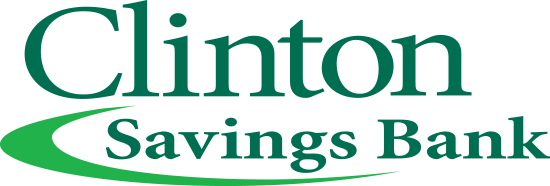Protecting Your Business from Theft and Fraud

Clinton Savings Bank is not a financial advisor. Please consult with a licensed professional who can provide advice tailored to your individual circumstances.
While we hope you find this content useful, it is only intended to serve as a starting point. Nothing in this article, nor in any associated resources, should be construed as financial or legal advice. Furthermore, while we have made good faith efforts to ensure that the information presented was correct as of the date the content was prepared. CSB disclaims any liability arising from the use or misuse of these materials and, by visiting this site, you agree to release CSB from any such liability. Do not rely upon the information provided in this content when making decisions regarding financial or legal matters without first consulting with a qualified, licensed professional.
Protecting Your Business from Theft and Fraud
There are several risks you’ll face in business, from employee theft to a competitor stealing your intellectual property. If you start planning now, you may save yourself a significant financial cost in the future.
Staff Theft and Fraud
To safeguard your business from possibly being affected by employee misconduct, try and take some proactive steps that may help limit fraud. A written policy of accountability and robust cash-handling systems may help reduce the risk of theft or fraud.
Common examples of employee misconduct include:
- Stealing products or stealing and selling to others at a lower cost.
- Stealing work time, usually leaving early, wasting time at work and keeping other employees from getting their work done.
- Excessive and unauthorized employee travel costs and expenses.
- Filling up their personal car with gas using the company-issued fuel card.
Addressing these types of employee misconduct may help protect your business from unnecessary losses, but it also promotes a fair, productive workplace culture.
Solutions to Protect Your Business
You can help safeguard your business if you want to maintain trust, efficiency, and profitability. Here’s some tips:
- Outline specifically what’s considered theft in any employment agreements with staff and what’s deemed misconduct. For example, taking one piece of photocopy paper home may be acceptable, but taking a whole ream of paper may not be.
- Train your managers to spot theft. A vigilant manager is usually the first and immediate line of defense against employee misconduct.
- Regardless of who it is, you must be seen to act, otherwise you’re viewed as condoning the action and it becomes an accepted practice.
- Limit the number of employees assigned to a business credit card set card spending limits.
- Set up stock control software and systems to track all products in and out of inventory.
- Remove cash handling by going online for all receipts and asking business customers to pay online.
- Deposit cash to your business account at least daily, if not more often depending on the amount of cash you carry.
- Pay for expenses via a business credit card rather than using petty cash.
Implementing these measures may help reduce the risk of theft and misconduct, creating a more secure and trustworthy environment for your business.
Customer Payments Fraud
Customer payments fraud involves any form of deception by customers that results in financial loss. Knowing the types of fraud can help you possibly reduce and address these risks effectively.
One common form is check fraud, where an individual writes multiple checks in a short timeframe despite insufficient funds in their account. Credit card fraud is another frequent issue, where someone illegally uses another person’s credit card or a stolen card for purchases.
Counterfeiting can affect your business if someone tries to pay with counterfeit cash or checks. Being aware of these threats and training your team to recognize them can help safeguard your business from these common fraud risks.
You may reduce your exposure with these simple steps:
- Performing credit and security checks on any credit you offer to other businesses, and don’t forget to check the debt history of the owners.
- Only accepting advance payments, or at least a deposit before commencing work to cover your material costs. If it’s possible, ask for progress payments on a regular basis so you’re paid as you go.
- Not allowing employees to sell to friends and family, who could be receiving large unauthorized discounts.
- Educating your staff on common fraud techniques and how they can spot them. These include a customer having no photo ID, so you can’t check their card details, or buying a small amount of product with cash, then buying a large volume with a stolen credit card.
- Allowing only a select few employees to accept payments from customers and regularly changing these employees so it’s not the same person each time.
When you put these methods into practice, you may reduce the risk of customer payment fraud, protect your business’s revenue and create a more secure payment environment.
Next Steps
- For more information regarding protecting intellectual property, visit the United States Copyright Office or the United States Patent and Trademark Office.
- Protection from theft and fraud is down to being proactive, prepared, and having good systems in place to both discourage and detect theft and fraud.
- It’s important to take the necessary steps to protect your business, since it can save stressful, costly and time-consuming processes down the track.
- If you’re unsure, get professional IT help.
When you take a proactive approach to protecting your business from theft and fraud, you’ll save time, money, and stress.

